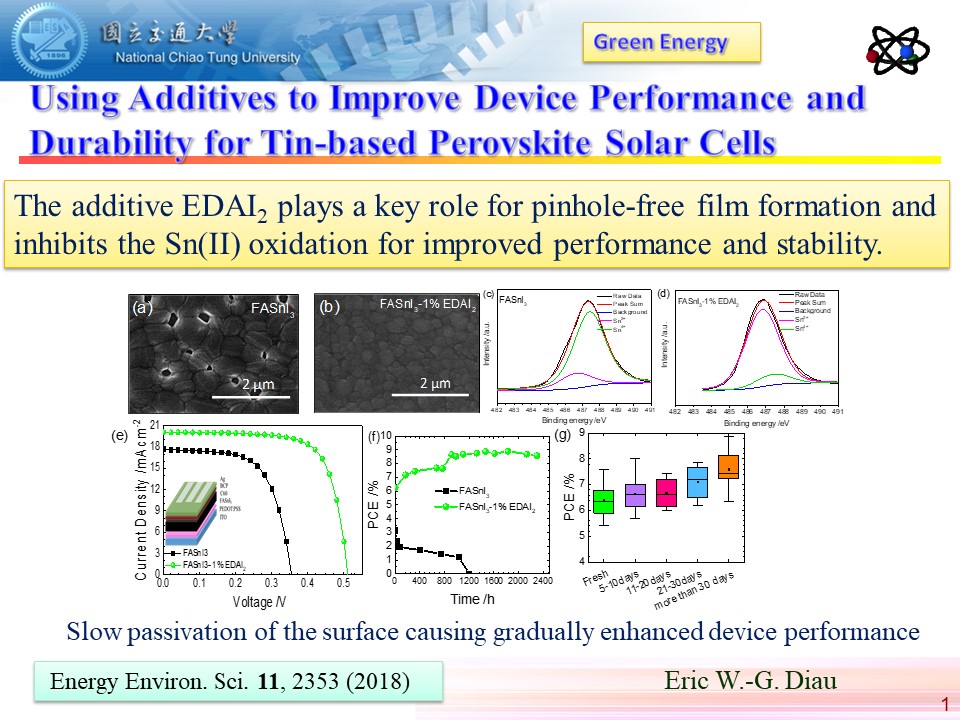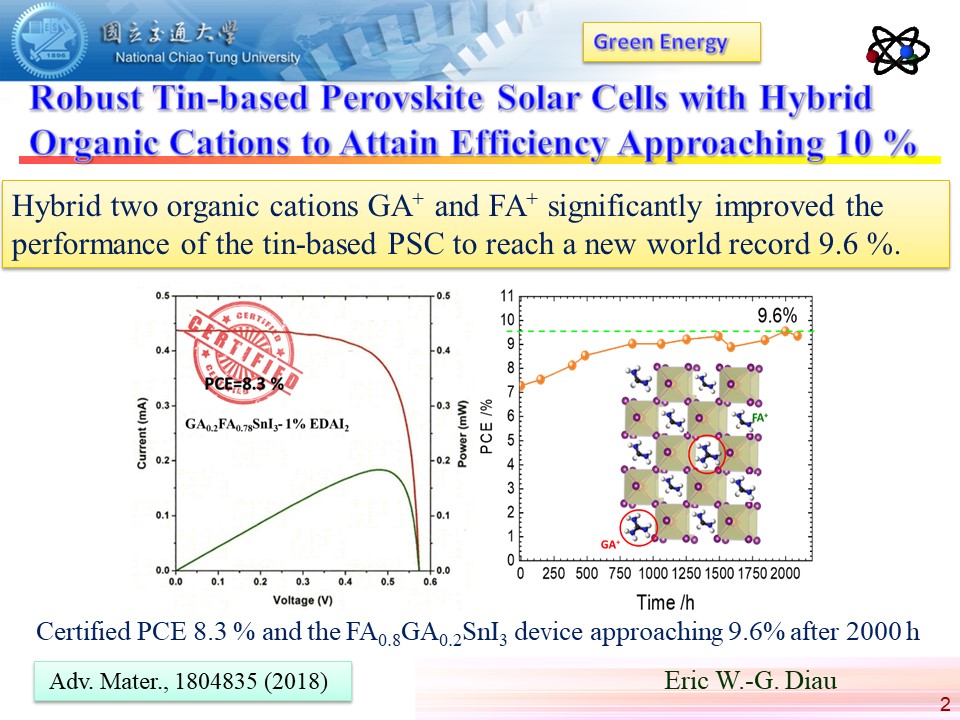

Using additives to improve device performance and durability for tin-based perovskite solar cells

We investigated the doping effect of bulky organic cations with ethylenediammonium diiodide (EDAI2) and butylammonium iodide (BAI) as additives to enhance the performance and stability of the FASnI3 perovskite solar cells. The additive EDAI2 plays a key role to cause slow passivation of the surface and relaxation of crystal strain such that the device performance increases gradually with increasing duration of storage. In the presence of EDAI2 additive (1 %) the FASnI3 device attained the best initial efficiency 7.4 % and the device performance continuously increased as a function of duration of storage; the maximum PCE, 8.9 %, was obtained for a device stored in a glove box for over 1400 h with only slight degradation for storage beyond 2000 h.
* E. Jokar, C.-H. Chien, A. Fathi, M. Rameez, Y.-H. Chang and E. W.-G. Diau, “Slow surface passivation and crystal relaxation with additives to improve device performance and durability for tin-based perovskite solar cells”, Energy Environ. Sci. 11, 2353 (2018).
Robust tin-based perovskite solar cells with hybrid organic cations to attain efficiency approaching 10 %

The stability of a tin-based perovskite solar cell is a major challenge. Here we report hybrid tin-based perovskite solar cells in a new series that incorporate a non-polar organic cation, guanidinium (GA+), in varied proportions into the formamidinium (FA+) tin triiodide perovskite (FA1-xGAxSnI3) crystal structure in the presence of 1 % EDAI2 as an additive. The device performance was optimized at precursor ratio GAI:FAI = 20:80 to attain PCE 8.5 % when prepared freshly; the efficiencies continuously increased to attain a record PCE 9.6 % after storage for 2000 h. The fresh device passed all strict verification steps and was certified to give the efficiency of power conversion 8.3 %. The great performance and stability of the device reported herein have attained a new milestone for lead-free perovskite solar cells on a path toward commercial development.
* E. Jokar, C.-H. Chien, C.-M. Tsai, A. Fathi and E. W.-G. Diau, Adv. Mater., 1804835 (2018). DOI: 10.1002/adma.201804835